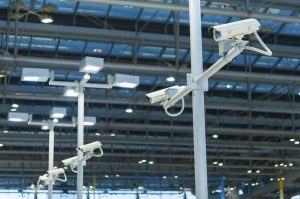
With more tools out there for video manipulation, how does video surveillance protect against tampering?
We live in a time where video still seems to be king–after all, photos are easily manipulated even by an amateur Photoshop user, but video is far harder to tamper with in any meaningful way. After all, if you watch a video of President Trump giving a speech, it’s clearly him, right? Not so. There are more and more tools capable of both video and audio manipulation to a degree that could hail a new future of even more fake news and put video surveillance at risk. There are ways to challenge those risks, but let’s take a look at how video surveillance could be changing.
Real Time Video Manipulation
Software developed at Stanford University–Face2Face–is capable of real time video manipulation. As an example, a subject would be able to capture their own face and then have whatever subtle movements their face makes morphed onto the face of the person in another video. This could lead to someone taking on the face of a high ranking politician and saying things the politician never really said. Software development company Adobe showed off a demo for Voco, a powerful audio editing software that could be used to alter someone’s voice into sounding like a different person.
Why is it a Concern for Video Surveillance?
Changes in technology like this are concerning to the security world in general. When it comes to being able to manipulate audio, it may render biometric systems that utilize voice recognition completely compromised. Video manipulation offers similar hurdles. If we’re able to take on the face of others in real-time, it could have some very negative implications for facial recognition technology and video surveillance as a whole.
Combating Security Threats
Thankfully, the technology hasn’t advanced to be a cause for concern–yet. As of now, video surveillance experts will be able to authenticate video based on lighting and shadows in videos, as well as whether elements in frames are of the right size or if audio is correctly synced. While doctored content may not be able to pass the eyes of an expert, though, it could spread virally in the public domain to disastrous results. Lastly, as we head in this direction, we must create a much-needed emphasis on things like digital watermarking so we can authenticate video and audio as being reliable means of surveillance and security.
Intelligent Video Surveillance Systems from Gatekeeper
Gatekeeper Security’s suite of intelligent optical technologies provides security personnel with the tool to detect today’s threats. Our systems help those in the energy, transportation, commercial, and government sectors protect their people and their valuables by detecting threats in time to take action. From automatic under vehicle inspection systems, automatic license plate reader systems, to on the move automatic vehicle occupant identifier, we offer full 360-degree vehicle scanning to ensure any threat is found. Throughout 30 countries around the globe, Gatekeeper Security’s technology is trusted to help protect critical infrastructure. Follow us on Facebook, Google+, and LinkedIn for updates about our technology and company.
